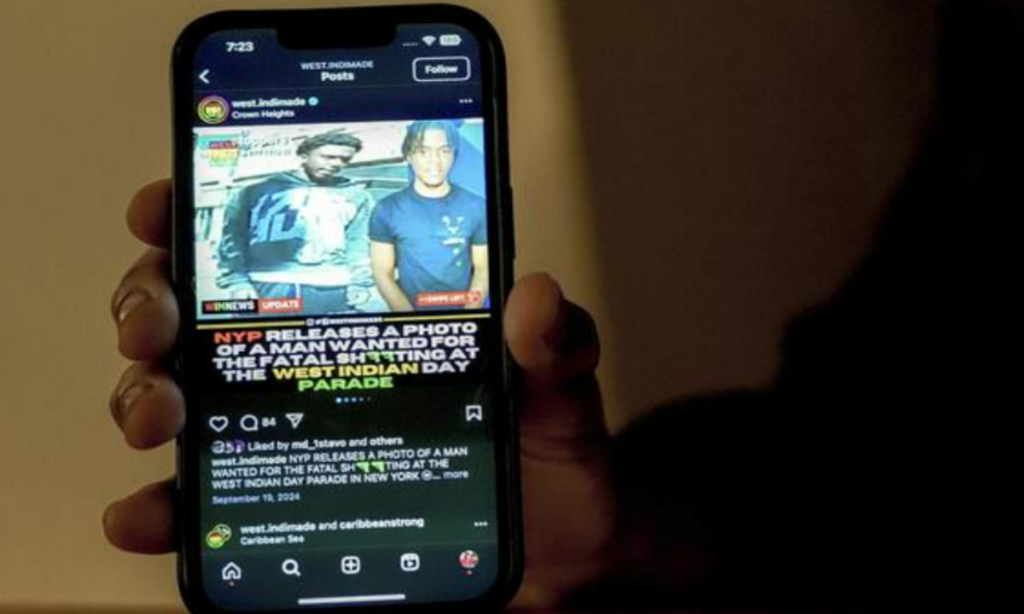In September 2024, 15-year-old Camden Lee’s life took a drastic turn when the New York Police Department (NYPD) mistakenly identified him as a suspect in a mass shooting during the West Indian American Day parade in Brooklyn.
The NYPD shared a surveillance image on their social media platforms, labeling Lee as the individual responsible for discharging a firearm that resulted in one fatality and four injuries. The wrongful identification led to severe consequences for the teenager and his family.
The Incident
On the day of the parade, Lee, after attending his high school football practice, decided to visit the event with a teammate. Shortly after their arrival, gunfire erupted, and his friend sustained a shoulder injury. A surveillance camera captured Lee’s stunned reaction to the shooting, which the NYPD later used in their public appeal for information. The department released his photo, calling him a “wanted suspect” in a high-profile case that had already gained widespread media attention.
Immediate Aftermath
Upon seeing his image shared across news outlets and social media as a murder suspect, Lee and his mother, Chee Chee Brock, were devastated. The terrified family promptly contacted attorney Kenneth Montgomery, who arranged a meeting with police officials. During this meeting, detectives acknowledged their mistake, confirming that Lee was not a suspect. They assured the family that no charges would be filed and quietly removed the image from their official accounts. However, the NYPD did not publicly acknowledge the retraction or issue an apology, leaving Lee to deal with the consequences of their error.
Despite the removal of his photo, the damage had already been done. His image continued to circulate online, and misinformation spread rapidly. Death threats began flooding his social media accounts, forcing Lee’s mother to take drastic measures to ensure his safety. Fearing retaliation from gangs and community members who still believed he was involved, Brock temporarily relocated her family outside of Brooklyn.
The Long-Term Impact
The mistaken identification disrupted Lee’s life in unimaginable ways. Missing weeks of school due to safety concerns caused his grades to decline. The emotional toll of being falsely accused weighed heavily on him, leaving him anxious and withdrawn. He became hesitant to leave home, fearing the judgment of strangers who might recognize his face from news reports. The fear of wrongful persecution turned his once-normal teenage life into one filled with paranoia and stress.
Brock, a single mother working at the post office, expressed her heartbreak over the situation. “As a mom, the No. 1 thing I’m scared of is losing my kids to the streets or the jail system,” she said. “So he doesn’t have freedom now. When he goes to the corner store, I time him.”
Calls for Accountability
The incident has raised significant concerns about the NYPD’s procedures for handling mistaken identities. Critics argue that the department’s failure to publicly acknowledge its error has endangered Lee and further eroded trust between law enforcement and the community. The family’s attorney, Kenneth Montgomery, has called for a formal apology and an explanation of how such a critical mistake occurred.
“There’s tremendous pressure on the NYPD to serve up results in a high-profile shooting like this,” Montgomery said. “The fact that they’ve failed to explain how this mistake was made, and how they’ll avoid it in the future, is deeply troubling.”
The case has also sparked discussions about police transparency and accountability, with legal experts highlighting the dangers of premature accusations without proper verification. Civil rights advocates have pointed to this case as an example of how social media can be misused by law enforcement, creating irreversible damage to innocent lives.
Conclusion
Camden Lee’s experience underscores the profound impact of misinformation and the critical importance of accountability in law enforcement communications. While the NYPD has quietly removed his image, their failure to publicly clear his name has left lasting consequences. As the family seeks justice, the case serves as a stark reminder of the responsibilities that come with public information dissemination and the urgent need for police reform.
Disclaimer—Our team has checked this article to ensure its accuracy and eliminate any misinformation. We are committed to providing clear and reliable information for our readers.


